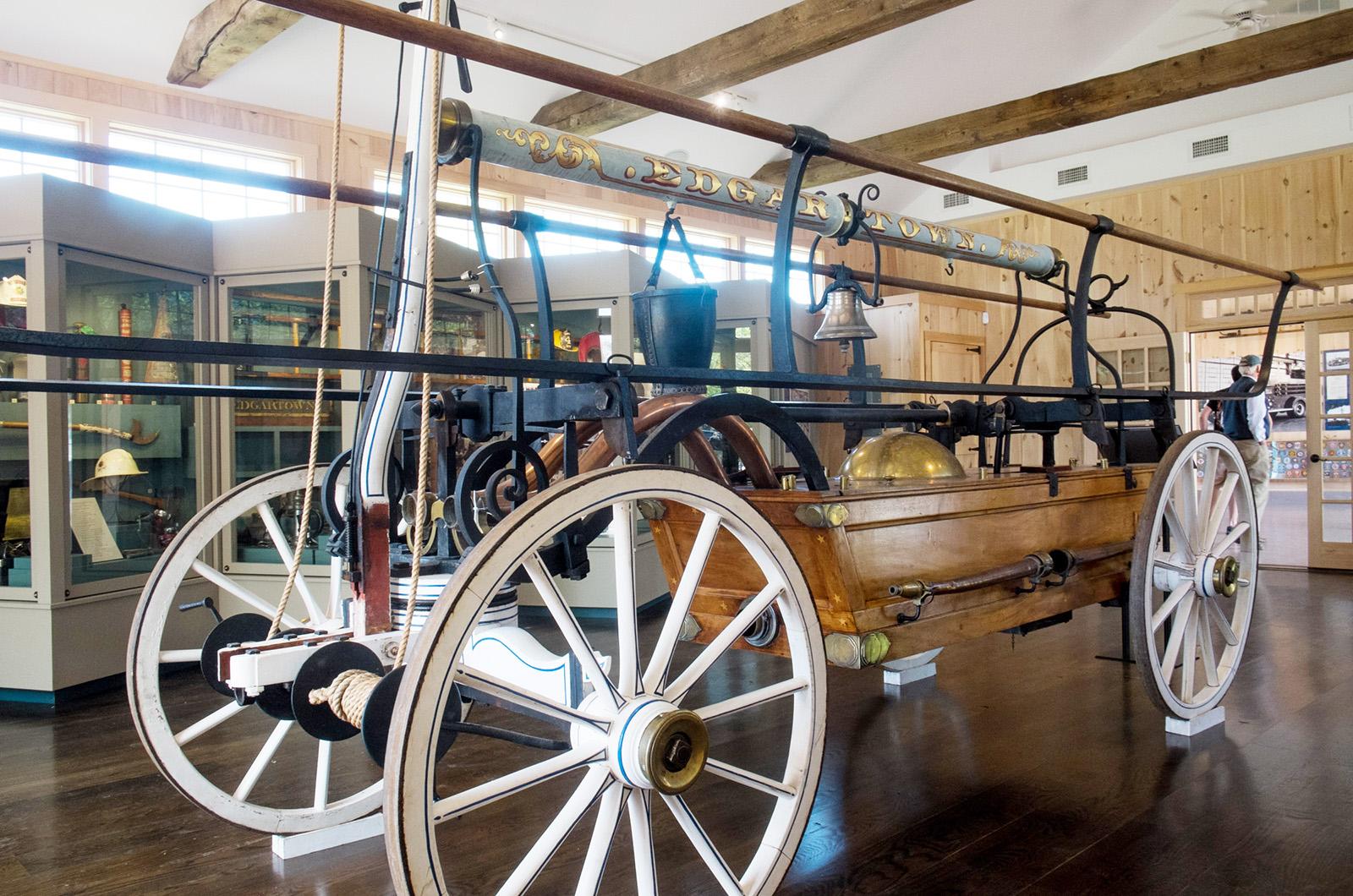From the March 14, 1952 edition of the Vineyard Gazette:
No list of the important occupations of any community would be complete without a fire chief. In larger towns and cities, being a fire chief or fireman is a full-time job, a trained vocation at a salary which is at least reasonably attractive. A silent and ever watchful custodian of community property, the chief and his department members are generously endowed with responsibility. A professional department head is supplied with a corps of soundly-trained, experienced fire fighters and the latest equipment and aids in fire fighting that science is able to supply to cope with the task.
Being a fire chief, or fireman, in a small town is quite another matter! In such cases fighting fire is no longer a job – it’s done voluntarily and for the love of it, or it’s not done at all. Typical of the spirit that should fill the firehouses of thousands of small communities in answer to the fire alarm, is Edgartown’s own chief, William P. Silva.
A smoke-eater for nearly a half century, Chief Bill Silva, as he is known to most of his fellow firemen and the majority of his townsmen, started his career with the Edgartown department back in the days when the town’s fire apparatus consisted of a hand-towed, hand-operated Button pumper. Over the years since that time he has witnessed the installation of town water mains and hydrants, seen the old hose carts come and go, and taken part in the evolution of the department into a well trained unit equipped with three large trucks and a fire house.
In common with members of his department, but to an even greater extent, his service has consisted of giving countless hours of his time and effort towards improving and building up his department. For a nineteen-year period, from 1931 to 1950, as the drillmaster of the department, he spent three nights weekly, winter and summer, training the men in each of the three companies that make up the unit.
Chief since 1950 and acting chief for some years prior to that, he continues to devote considerable time in the interest of the department. When he was sought out one night recently for an interview, he was crawling around in the back of the “new” Mack with several of his men, doing a minor alteration.
Reminiscing later at his desk in the chief’s office, he said he had first joined the department in 1905 at the age of 18, when he was appointed a deputy forest fire warden under Manuel S. Roberts. Leaving Edgartown the following year for New York, he returned to the Island in 1912 and has belonged to the department continuously since that time.
In 1905 the Button engine was still in service after having been used since 1885. Pointing out the old pumper in a picture on the wall, the chief chuckled and said, “The more men that pumped and the harder they pumped, the more water you got.” On occasion he added it had sent a stream of water as high as the top of the Methodist church. The faithful old piece of equipment, now in the hands of the Dukes County Historical Society, was housed under the town hall, and the engineers’ office was where the police station is now situated.
The water supply on which the Button engine drew was a series of wells, located in front of the present Catholic church, on the corner of Summer and Main, at the foot of Main street and on the corner of Summer street and Davis Lane.
With the change over to water mains, two hose companies and a ladder company held the fort until 1928, when the first Mack truck arrived, the same truck, incidentally, that Chief Silva now plans to replace, after a favorable vote on an article at town meeting for this purpose. “I was appointed captain of her and served two and one-half years, and then was appointed to the board of engineers,” he said.
The biggest fire he recalled was only a year ago, when the Otis L. Guernsey home at Kent Harbor went up in flames on Jan. 23, 1951. The department arrived at 8 in the morning and was still pumping water on to the wreckage at 4 in the afternoon.
Going through various records in his desk to verify dates as he talked, he added, “The making of a darn good fire was at the Harbor View two years ago, but we caught it in time.” The Boston House fire in 1938, at which the Edgartown department helped, and the canning factory blaze on the old county road to Vineyard Haven in 1940 he also listed as “bad ones”.
The remarkable fact that over so many years no conflagration has seriously damaged Edgartown was attributed to good luck, but also appears to be a tribute to the calibre of the department.
With some pride, he pushed back his chair and said, “I think we have an up to date department and I wouldn’t take off my hat to any department hereabouts.” The calibre of his well-trained, well-equipped department not only bears out this statement but in addition reflects at least in part the unfailing interest and energy that he has so generously given to the department.
Compiled by Hilary Wallcox
library@vineyardgazette.com




Comments
Comment policy »